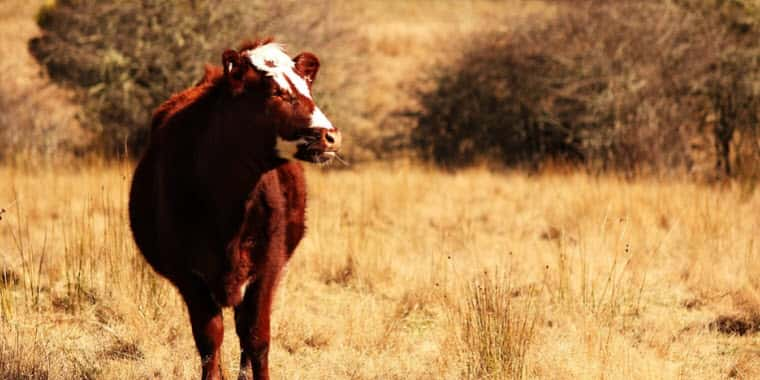The Mid-Year Cattle Inventory Report confirmed that the cumulative effects of drought that past two years have accelerated liquidation of the beef cattle herd. The July 1 inventory of all cattle and calves was 98.8 million head, down 2.0 percent year over year. The beef cow herd decreased by 2.4 percent year over year, a decline of 750,000 head from last year to the current total of 30.35 million head, the smallest inventory since 2014. From the recent peak in 2018, the July beef cow inventory has declined by 6.3 percent, or a total of 2.05 million head.
The July inventory of beef replacement heifers was down by 3.5 percent year over year. Feeder cattle supplies are estimated from the sum of inventories of other heifers and steers (over 500 pounds) plus calves (under 500 pounds) minus cattle on feed. The estimated July 1 feeder supply was down 2.7 percent from last year.
The decline in cow numbers didn’t shock anybody in the cattle business. Intense drought across much of the western U.S. has led beef cow slaughter 14% higher year to date. Also, a large number of replacement heifers were diverted to feeding channels this winter and spring and retention of females has reduced.
While drought conditions have improved in some areas of the Northern Plains like Eastern Montana and North and South Dakota, drought has intensified to the South from Nebraska to Texas. Oklahoma State Extension Livestock Marketing Specialist Derrell Peel says producers in the Southern Plains are “destocking at a rapid rate as pasture conditions deteriorate rapidly. The volume of feeder cattle in Oklahoma auctions the past two weeks is up 24 percent year over year. It appears that calves are being weaned and marketed early.”
The smaller beef cow herd translated into a smaller calf crop in 2022, the fourth consecutive year of a decline in the calf crop. DTN Livestock Analyst ShayLe Stewart called into question the calf crop only being reported down 1% from 2021. “Of all the numbers reported, this one seems questionable to me, as extreme weather conditions made calving difficult in the North, and with fewer cows lining the plains and prairies from coast to coast, one would sensibly expect a bigger decrease in the nation’s calf crop.”
The monthly Cattle on feed report was also released on Friday and estimated July 1 feedlot inventories at 11.34 million head, a scant 0.4 percent above last year. July, along with every other month this year has had record monthly inventories, but the year over year gap is declining.
June feedlot marketings were up 2.0 percent year over year. Placements in June were down 2.4 percent from one year ago. This is the fourth consecutive month of lower feedlot placements. In the past two months, placements have consisted of increased numbers of cattle under 700 pounds with sharper decreases in placements over 700 pounds leading to an overall decline in placements. Placements would have fallen faster without the lightweight placements. Increased lightweight placements now mean that fewer cattle will be available for placement later.
The July Cattle on Feed report also included the quarterly breakdown of steers and heifers on feed, with steer inventories down 1.1 percent from last year but heifers on feed up 2.9 percent year over year. Heifer slaughter is up 3.9 percent for the year to date and this July heifer inventory means that heifer slaughter will continue large in the second half of the year.
The total supply of feeder cattle has decreased by 1,000,000 head. So there is no question that liquidation of the U.S. beef cowherd continues. But the supply is sure to tighten going forward as drought continues.
The smaller supply of feeders has already translated to higher values. For many ranchers this is the most expensive calf crop they’ve ever raised as feed costs, fuel, labor and many other inputs have climbed dramatically in the past year. So profitability has not necessarily improved. Fall-delivered calves selling on the summer video sales have been averaging $25-35/cwt ahead of last year though.
###
DTN/Oklahoma State Extension/Northern Ag Network


